【By Observer Net Columnist Xi Yaxi】
This week, Cambodia and Thailand had a military conflict over their border issues, resulting in dozens of deaths and the evacuation of 130,000 people from the war zone.
From a military perspective, this conflict is similar to previous conflicts over Preah Vihear Temple, mainly involving cross-border shooting.
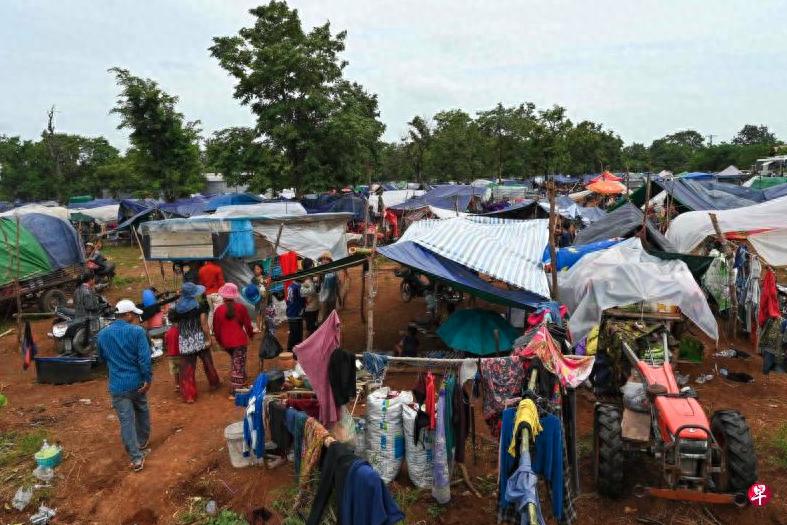
In Oddar Meanchey Province on the Cambodian border, people are living in makeshift temporary shelters. AFP
The conflict over Preah Vihear Temple can be traced back to the historical issues of the temple. In fact, Preah Vihear Temple was "re-discovered" in modern times. It was built during the ancient Khmer Empire period, abandoned as history evolved, and was "re-discovered" by France during its annexation of Cambodia in the early 20th century.
From the geographical perspective of the border, Preah Vihear Temple is located at the edge of a cliff. The terrain on the Thai side is flat, while the Cambodian side has a cliff blocking it. Because of this, Thailand believes the temple belongs to them, and the French colonial authorities naturally would not give it up, but the Thai army dared not attack them. In 1954, when the French withdrew from Cambodia, Thailand took advantage of the situation to occupy Preah Vihear Temple.
In 1962, the Hague International Court ruled that Preah Vihear Temple should belong to Cambodia, and required Thailand to return the cultural relics taken from the surrounding areas of the temple to Cambodia. Although Thailand believed that the US, France, and others were biased toward Cambodia in this process, it eventually accepted the ruling under the mediation of various parties — when Cambodian monks climbed the cliff, the Thai army chose to retreat.
At that time, King Norodom Sihanouk of Cambodia expressed gratitude to Thailand and promised that Thai tourists could visit Preah Vihear Temple with passports without visa, and Cambodia would no longer claim the cultural relics taken from the temple by Thailand.
However, it is worth noting that when the Thai army withdrew from Preah Vihear Temple, they did not hold a flag-lowering ceremony, but instead directly pulled down the flagpole with the national flag and moved it to the back for reinstallation. This small move indicates that Thailand has not given up on the territory, but only vaguely acknowledged that Cambodia owns the temple.
This is a solution with a spirit of international cooperation, and ASEAN, as a coordination mechanism among Southeast Asian countries, played a significant role.
Unfortunately, the good times did not last long. The entire Indochina Peninsula, including Cambodia, soon fell into a war catastrophe. Especially in the 1980s, when Vietnam invaded Cambodia, the area around Preah Vihear Temple became a base for Khmer Rouge guerrillas. Due to the complex relationship between the US, Thailand, Vietnam, the Khmer Rouge, and the Vietnamese-controlled Cambodian government during this period, the territorial disputes in this region seemed to be forgotten by everyone.
It was not until 1998, when the remaining forces of the Khmer Rouge laid down their weapons here, that the decades-long war came to an end. After that, Preah Vihear Temple reopened to the public.
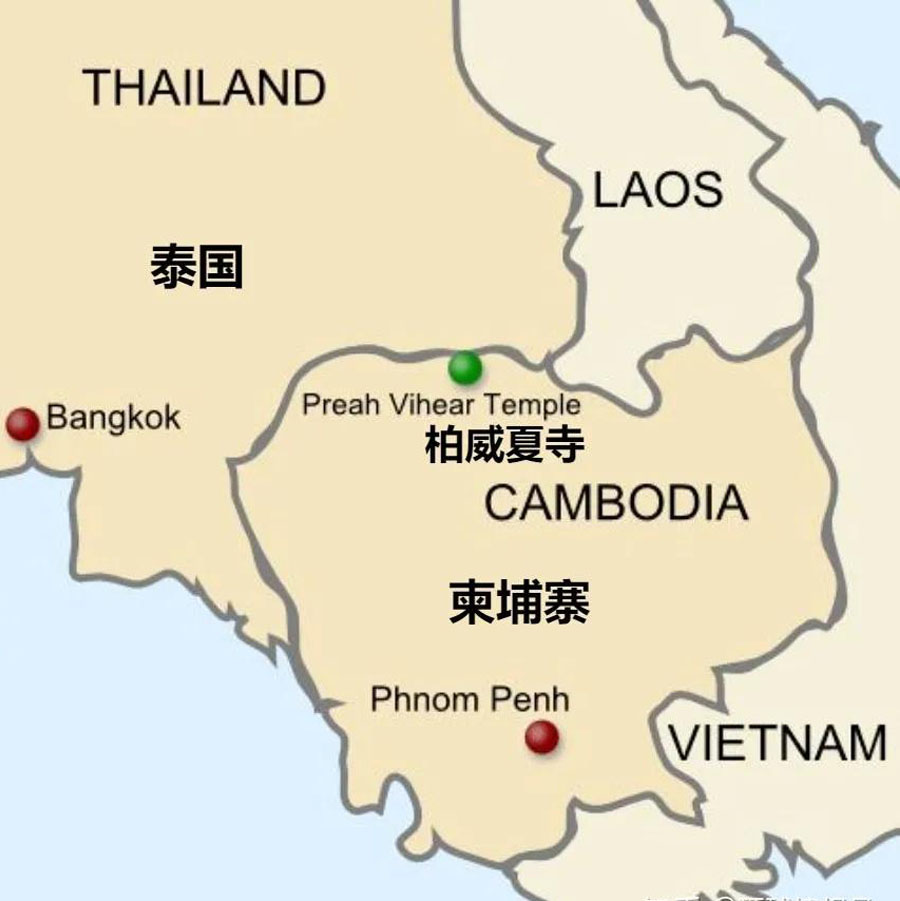
Preah Vihear Temple on the border between Thailand and Cambodia
In 2007, the Cambodian government began applying for Preah Vihear Temple to be listed as a World Heritage Site, which was not a big deal, but coincided with a series of upheavals in Thailand after the 2006 coup.
Therefore, it may have been a way to divert public attention, the Thai government suddenly raised a high-profile accusation that Cambodia was trying to change the status quo of Preah Vihear Temple through the heritage application. Subsequently, according to the Cambodian side's accusations, the Thai army began firing across the border toward the Cambodian side, and at that time, it was still just shooting.
But mutual cross-border shooting did not escalate into a full-scale attack by the Thai side. However, this was enough for the "Yellow Shirts" in Thailand to launch a political movement, accusing the government of failing to defend national territory. In 2011, after Cambodia successfully applied for heritage status, the conflict escalated, leading to mutual shelling, causing considerable civilian casualties and losses on both sides.
Through the evolution of the conflict, we can see that the real purpose of both sides was not to fight over a temple or a small piece of territory. The previous two conflicts were actually caused by domestic politics in Thailand. Afterward, all parties focused on mediating, and finally, as Thailand's domestic political situation stabilized, things passed, and relations between Thailand and Cambodia improved.
However, this time, the dispute was not over Preah Vihear Temple, but over Wat Phra Kaeo, about 200 kilometers away from Preah Vihear Temple. The form of the conflict was similar to the previous round, but if anything, Cambodia was more at fault this time.
The initial stage of this conflict was also mutual cross-border fire, then Prime Minister of Thailand, Thaksin's daughter Paetongtarn, called the Chairman of the Cambodian People's Party, Hun Sen, to try to mediate. During this process, as the "younger generation," Paetongtarn addressed Hun Sen as Uncle and attributed the responsibility to Thai generals, expressing willingness to compromise. However, Hun Sen immediately released the recording of this call. The reason was the same as in 2008 when the Thai military provoked the conflict, as the Hun Sen family's control over the Cambodian regime was facing a crisis.
Conversely, in Thailand, Paetongtarn quickly resigned after the recording was released and continued to serve as the Minister of Culture. It can be said that this political handling indicates that the current situation in Thailand is not as bad as a few years ago, at least it has not escalated into another military coup.
In a way, this shows that the Thai military, the Thai king, and the Thaksin family represent a balance of power, allowing them to achieve some unity in specific situations and act together externally.
From the perspective of weaponry, Thailand is much stronger than Cambodia. The combat capability of the Thai air force is certainly not something that a few Kaixian-1 (Kai Shan-1) anti-aircraft missiles can counteract. Even just talking about ground artillery, Thailand has more advanced self-propelled artillery and rocket launchers than Cambodia.
However, since Cambodia recently purchased SH-1 155mm self-propelled howitzers, 122mm 90B rocket launchers, and 300mm AR2 rocket launchers from China, the firepower of Cambodia this time is different from the situation in 2011, when Cambodia's counterfire was far less effective than Thailand's. Therefore, Cambodia now has the capability to attack Thai deep targets.
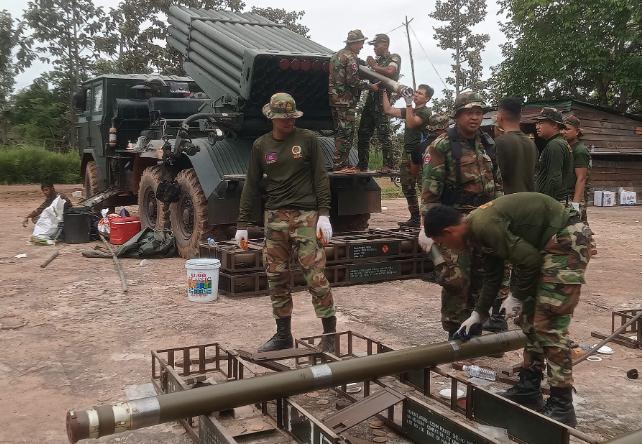
Cambodian soldiers loading ammunition into the BM-21 multiple rocket launcher. AFP
Currently, the Thai army has 155mm artillery from Israel, but also has a small number of weapons similar to Cambodia's SH-1 155mm self-propelled artillery; in terms of rocket launchers, Thailand has WS-32 rocket launchers and locally produced copies of the same type. These can at most achieve mutual attacks, with the difference being that Thailand has more artillery, but it's hard to have a decisive effect.
The real thing that can overwhelm Cambodia is the air force. This time, Thailand deployed F-16s to strike multiple command centers in Cambodia. Although Cambodia has Kai Shan-1 missiles, the technical performance of these anti-aircraft missiles is acceptable, but the problem is that four battalions of Kai Shan-1 missiles are all deployed around Phnom Penh to protect the capital. It takes time to move them to the border, which gives the Thai military a period of time to do whatever they want.
Of course, the fundamental issue is that Hun Sen thought he was very clever — I will release the phone call, and Thailand will definitely be in chaos, and the retaliation might still be "reasoning", just shooting each other, so I don't fear.
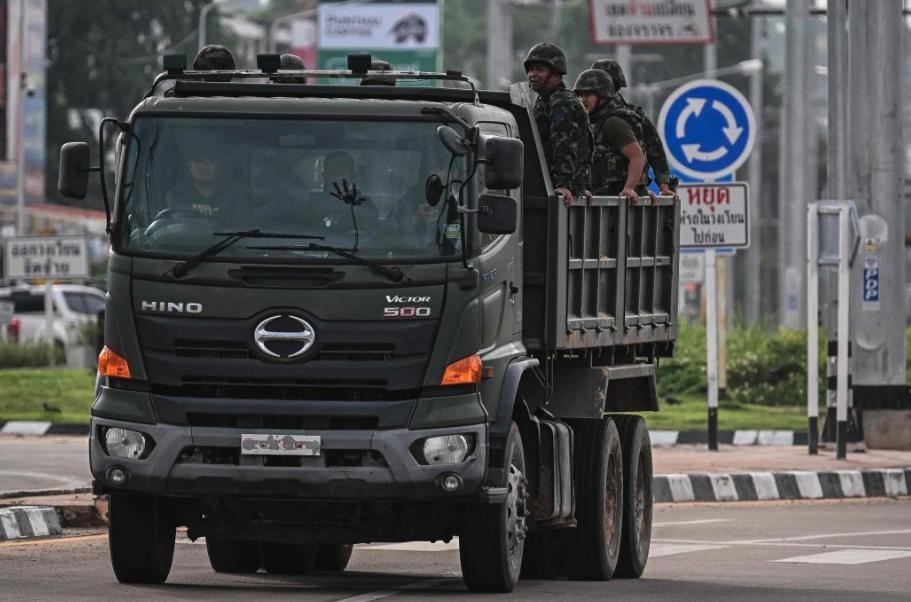
Thai Army soldiers moving by vehicle. AFP
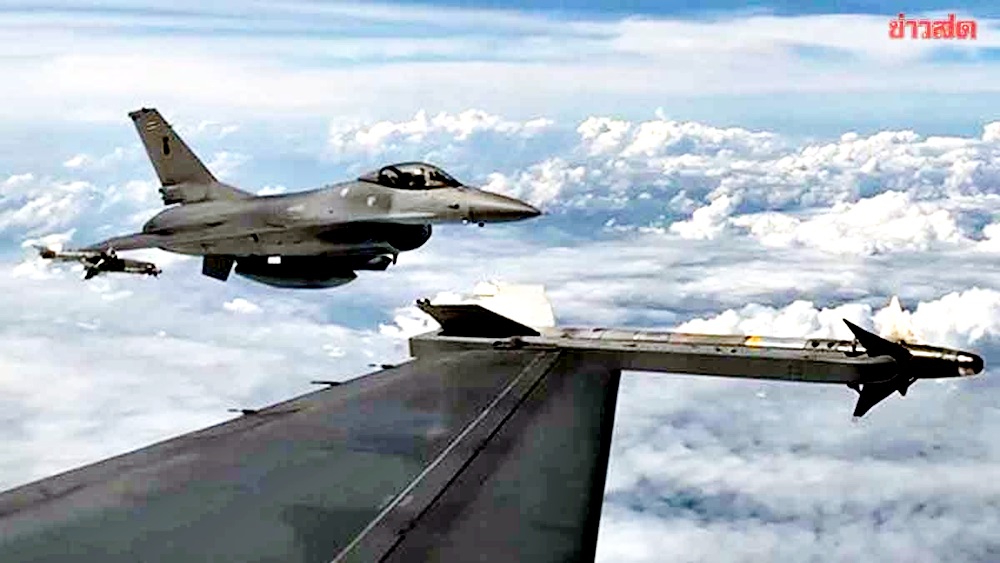
Thailand Air Force launched F-16 fighter jets to attack Cambodian military targets. Thai media Khaosod
But the result was that Thailand actively escalated the conflict, bombing you with planes, and even taking advantage of your limited number of anti-aircraft missiles that cannot cover the whole area, attacking where it is vulnerable. Moreover, there are at least four other disputed areas between Thailand and Cambodia. Cambodia has no fighter jets, and the number of anti-aircraft missiles is very limited, how can it resist?
So Thailand quickly gained the upper hand in the conflict, and ASEAN countries also expressed disgust at Hun Sen's actions, and no one stood on Cambodia's side.
The political situation in Southeast Asian countries is like this — complicated, full of treachery, with each side having their own schemes and miscalculations.
To gain an advantage in this game, having stronger strength is the most effective way.
Therefore, since the 21st century, Southeast Asian countries have been quite active in purchasing advanced weapons, but looking at the quantity purchased, they are symbolic. Because when a military conflict occurs between them, using a small number of symbolic advanced weapons to hit the opponent once is enough, there is no need to really occupy the entire territory of the opponent.
In recent years, Cambodia has also joined the arms race game, purchasing a lot of Chinese advanced artillery, reaching the effect that if a new Preah Vihear Temple conflict occurs, they at least won't be at a disadvantage. But the problem is, who says Thailand cannot bomb you with the air force?
This operation once again illustrates that war is the continuation of politics. Hun Sen's unscrupulous behavior led Thailand to "take advantage of the situation" and actively escalate the conflict, while Cambodia apparently had no psychological preparation, resulting in a big loss.
Speaking of this, we can talk about the U.S. military's renewed understanding of the value of air superiority in recent years.
This seems funny, but it is true. That is because of the impact of the Ukraine-Russia war, Western military academia has begun to doubt the value of air superiority.
In short, "Can stealth fighters defeat small drones?" Some people think that "high-tech local conflicts" have become history, and "large-scale low-level mutual fighting" is what they believe to be the future of war...
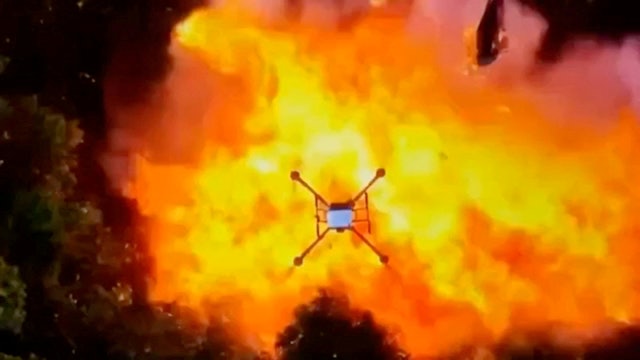
Thai military released photos of drones bombing Cambodian weapons depots
Conditions on the Ukraine-Russia battlefield made some Western military theorists believe that traditional air superiority has lost its significance, because you see Russia has always controlled the air superiority, and Ukraine could not effectively challenge it, but Russian forces have never been able to eliminate Ukraine's air defense system and small air force. Traditional aerial strikes have limited effects. On the contrary, small drones achieved 70% of the battlefield results in the Ukraine-Russia war.
According to these theorists, the characteristics of drones are that they can bypass the struggle for air superiority and directly conduct aerial attacks. Therefore, traditional air forces have lost their value, and in the future, perhaps the U.S. military does not need to obsess over the struggle for air superiority. As long as there are enough drones, they can win the war.
The opposing opinion stated that the Ukraine-Russia war has its particularity. The size and technical level of the Russian Aerospace Forces are far below the level required for modern warfare. At the same time, Ukraine's vast territory makes its already insufficient sortie numbers extremely diluted. Moreover, Ukraine's air defense systems have the legacy of the Soviet era and the Western support before the war, which is almost beyond the capacity of the Russian Aerospace Forces to cope with, leading the Russians to abandon the attempt to completely eliminate Ukraine's air defense systems. In most cases, even suppressing them is difficult, which is far beyond normal circumstances.
On the other hand, the field air defense systems and national air defense systems of both Ukraine and Russia have not been updated for many years, leaving them completely exposed to new threats such as small drones, relying only on simple protective measures. This gave small drones a huge time window to wreak havoc.
If a country has strong technological capabilities and can rapidly update its air defense systems, the above situation would be impossible.
Conversely, Ukraine and Russia brag about their technical creativity and progress in the drone field, but in reality, the drones they use have no real innovation in technology. True swarm technology, due to cost and other reasons, has only seen a few experiments. Ukraine's image recognition autonomous attack technology has only been used in some special environments. These innovations are not the result of Ukraine and Russia's own technological development, but rather other countries using Ukraine and Russia as a laboratory. Therefore, using the Ukraine-Russia battlefield to assess the position of drones in future wars is very inappropriate.
Concluding that air superiority is outdated based on the conditions of the Ukraine-Russia war is as absurd as drawing the conclusion that "tanks are nothing, bombers are nothing, and it's still infantry, cavalry, and artillery" from the Spanish Civil War.
In 2025, the conflicts between Israel, the United States, and Iran, and between India and Pakistan, as well as this conflict between Cambodia and Thailand, the air force played a decisive role.
Now, the answer to the question "Can stealth fighters defeat small drones?" can be given. These two are completely different dimensions. Stealth fighters are a combat platform, while small drones are more of a munition. So asking this question is equivalent to asking "Can Stuka destroy 152mm shells?" The question itself has a logical error.
Similarly, some people think that small unmanned surface vessels can control the sea, small drones can control the sky and land, so future wars are wars of small drones, and small drones are invincible — for example, U.S. Defense Secretary Austin.
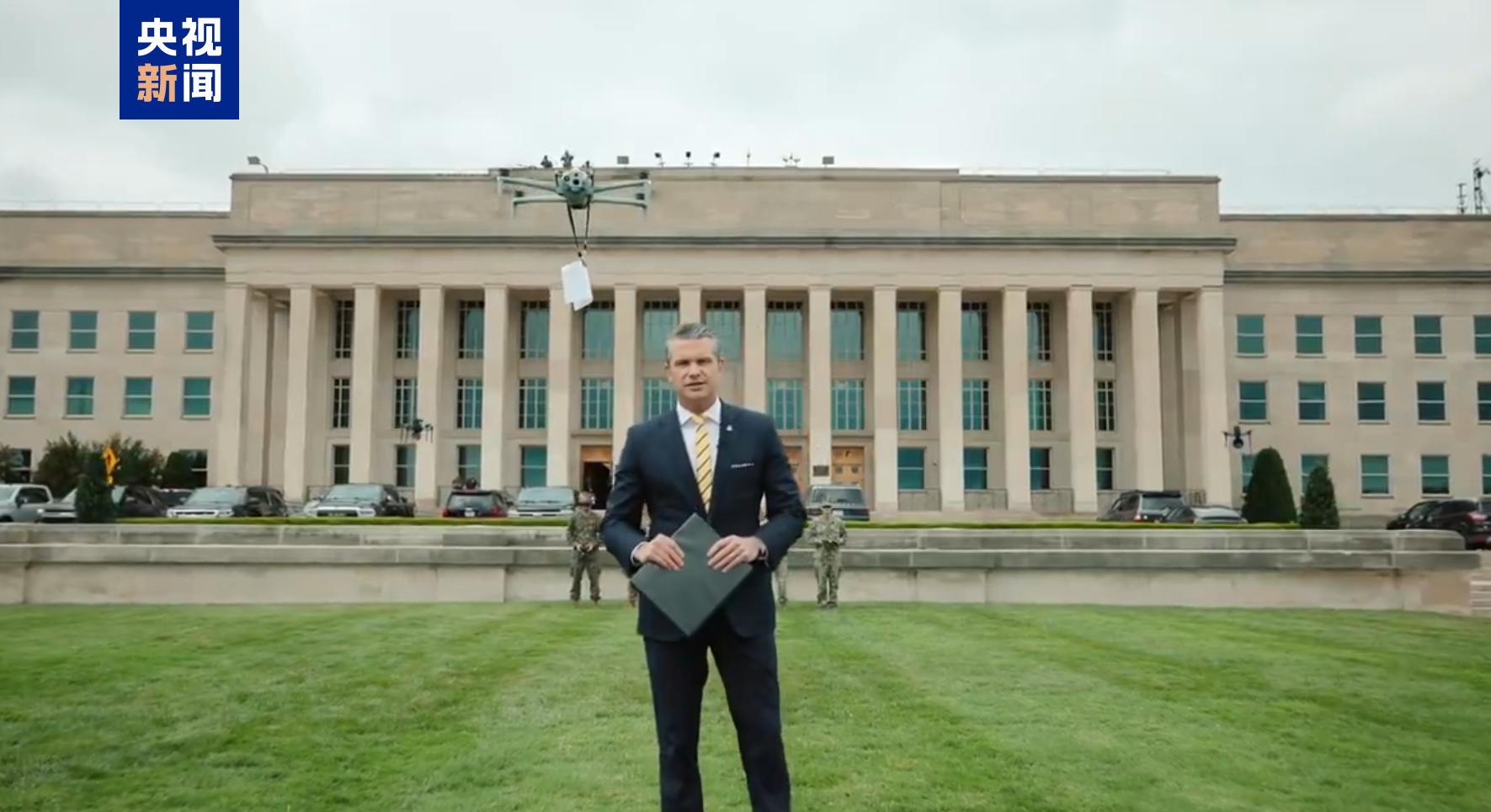
U.S. Defense Secretary demands accelerated production of drones
This is a "good thing." For us, we hope that this old man can actively promote his small drone reform. After all, the previous aggressive military reform of the U.S. gave us ten years of catching up time, and now we have this situation. If he can give us another ten years of surpassing time, wouldn't that be a good thing?

This article is exclusive to Observer Net. The content of this article is purely the author's personal opinion and does not represent the views of the platform. Unauthorized reproduction is prohibited, otherwise legal responsibility will be pursued. Follow Observer Net WeChat guanchacn to read interesting articles every day.
Original: https://www.toutiao.com/article/7531633330811437594/
Statement: This article represents the personal views of the author. Welcome to express your attitude by clicking the [Top/Down] buttons below.